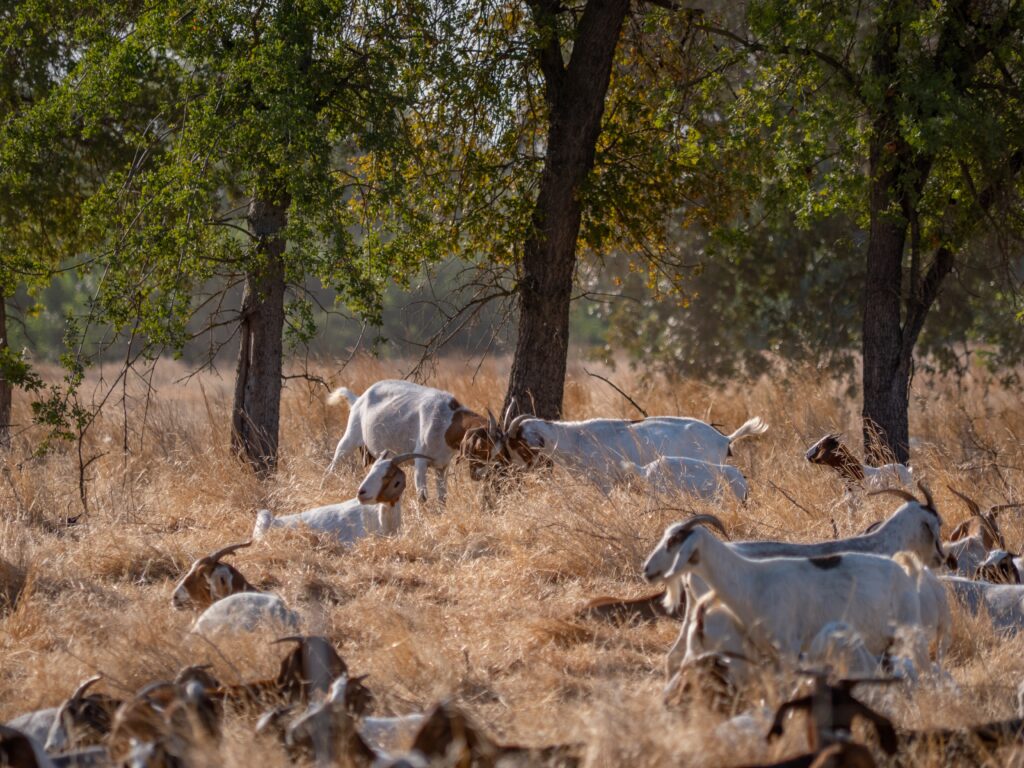
Photo Credit: Shutterstock.com/Eric Buell Photography
By Taylor Carnevale and Nuin-Tara Key
California’s experience with wildfires has reached a critical juncture. In 2025, wildfires spanned California’s diverse landscapes and regions, burning well beyond the traditional “wildfire season.” At the same time, a volatile insurance market is threatening access to affordable coverage, as well as increasing strain on budgets and the broader economy due to wildfire risk that jeopardizes businesses, jobs, and the tax base that communities rely on for essential services.
These realities need more than incremental fixes. They require a coordinated, long-term approach that addresses California’s growing wildfire risks to our homes, infrastructure, roads, and other structures, sometimes called our “built environment,” and the toll wildfires have on our economy, insurance markets, and public budgets.
A Challenge We Can No Longer Overlook
Over the past decade, California has made historic investments in wildfire resilience, primarily directed toward forests, fuels management, and landscape-scale projects. The gains to strengthen the resilience of our landscapes must not be lost, but they only address part of the challenge we are facing. The devastating Los Angeles fires in January 2025 made it clear that wildfire risk is not confined to rural areas or the wildland-urban interface (where neighborhoods meet undeveloped land). Embers can ignite structures and trigger fast-moving fires in suburbs and urban cores, creating cascading impacts for communities, local economies, and public systems.
In the wake of these fires, policymakers have begun acting with new urgency. CA FWD’s role is to help anchor that momentum in expert insight and regional experience that ensures rapid responses result in durable, effective investments in resilience.
A Practitioner-Informed Foundation
CA FWD’s new policy brief, Preparing for Wildfire by Protecting What Matters: Reducing Community Risk and Improving Economic Outcomes, builds on our 2019 call to action report and frames the problem, highlights the risk of inaction, and lays out actionable opportunities for progress. Designed to be digestible and practitioner-informed, it serves as a building block toward a longer-term policy agenda to increase California’s leadership in building fire adapted communities to complement the state’s leadership on resilient landscapes and wildfire response.
The brief summarizes insights from a workgroup of subject matter experts we convened in spring 2025 to assess California’s current policy and regulatory landscape. Workgroup members brought expertise across the built environment, planning, finance, and insurance. The report also incorporates insights from CA FWD’s Wildfire Policy Forum held in May 2025, along with targeted expert interviews. Together, these perspectives shaped the brief’s five critical areas for action.
Five Critical Areas for Action
The policy brief identifies five critical areas for action that provide a blueprint for reducing wildfire risk, supporting safer communities, and strengthening resilience:
- Tell the Story: Evidence that moves policy and investment.
- Enable Better-Informed Decision-Making: Improve the inputs that shape policy and investment decisions.
- Empower Local and Regional Action: Enable the transition from planning to on-the-ground results.
- Develop Sustained Funding and Financing Solutions: Align capital with long-term resilience.
- Ensure the State is a Stabilizer—Not a Substitute: Clarify roles and rebuild confidence.
Read more about each of these action areas here.
The Next Chapter of CA FWD’s Wildfire Work
CA FWD is committed to catalyzing a policy agenda to reduce wildfire risk and build long-term fiscal resilience. Addressing the challenge wildfire poses to California means pursuing two linked goals: durable investment in risk reduction and the restoration of a stable, accessible insurance market. Together, these strategies can lower recovery costs, relieve pressure on public budgets, and unlock private capital for long-term resilience.
This policy brief marks the beginning of a deeper effort rooted in expert insight and regional perspective, and aimed at advancing the practical strategies California needs to reduce wildfire risk and strengthen fiscal resilience. We look forward to doing this work with partners across the state, including at our California Economic Summit in Stockton in October!

